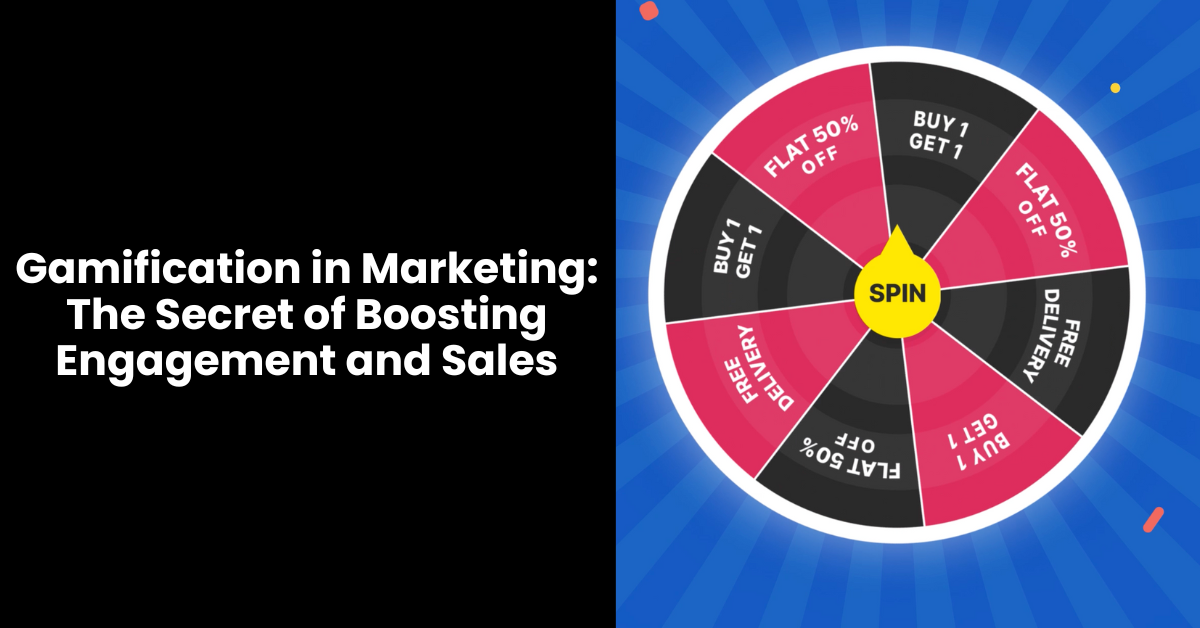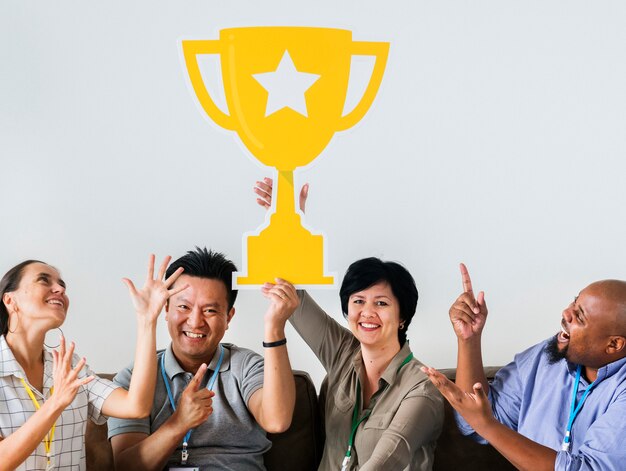Gamification in Marketing: The Secret of Boosting Engagement and Sales

In the e-commerce world, gamification can be used to make shopping more fun and rewarding for customers. It can also be used to encourage customers to try new products, explore the site, and make more purchases.
In this blog post, we'll explore the different types of gamification in marketing elements, how to use gamification in e-commerce, and examples of successful gamification campaigns. We'll also discuss how to measure the success of your gamification campaign and provide tips for getting started.
What is gamification in marketing?
Gamification in marketing refers to the strategic integration of game-like elements, mechanics, and design principles into non-game contexts, such as marketing campaigns and digital experiences. The goal is to engage and motivate consumers by tapping into the psychological aspects that make games enjoyable, such as competition, achievement, and rewards. In the context of e-commerce, gamification can be applied to various elements of the customer journey, from attracting visitors to encouraging repeat purchases.
Benefits of gamification in marketing
Gamification is the application of game design elements and principles in non-game contexts to engage and motivate users. It is a powerful tool that can be used to achieve a variety of marketing goals.
Here is the benefits of gamification in marketing:
- Increased Engagement:
- Gamification captivates and sustains user interest by introducing elements of fun and challenge. Customers are more likely to actively participate in marketing initiatives, spend more time on a website, and interact with content when gamified.
- Boosted Customer Loyalty:
- Gamification creates a sense of accomplishment and reward, fostering customer loyalty. Loyalty programs with gamified elements encourage repeat purchases, increased brand advocacy, and a higher likelihood of customers sticking with a particular brand.
- Behavioral Data Insights:
- Gamification allows businesses to collect valuable data on customer behaviors, preferences, and interactions. Analyzing this data provides insights into customer preferences, helping businesses tailor their marketing strategies for better targeting and personalization.
- Enhanced Brand Recall:
- By infusing entertainment and interactivity into marketing efforts, gamification makes the brand experience more memorable. Customers are likely to remember and positively associate a brand that provides a unique and enjoyable interaction through gamified elements.
- Incentivized Customer Actions:
- Gamification serves as a powerful motivator for desired customer actions. Whether it's making a purchase, sharing content on social media, or participating in surveys, the promise of rewards, badges, or recognition encourages customers to actively engage with the brand, driving desired outcomes for the business.
Types of gamification in marketing
Gamification in marketing can take various forms, each tailored to engage and motivate customers in unique ways. Here are different types of gamification marketing ideas:
- Points and Badges:

Users earn points or badges for completing specific actions, such as making a purchase, sharing content, or completing challenges. This encourages continuous engagement and recognizes user achievements.
- Leaderboards

Introducing leaderboards that display user rankings based on their activities or achievements creates a competitive element. Users strive to climb the leaderboard, fostering engagement and interaction.
- Challenges and Quests

Creating challenges or quests for users to complete encourages active participation. Whether it's reaching a certain milestone, completing a set of tasks, or solving puzzles, challenges add an element of excitement and progression.
- Rewards and Incentives

Offering tangible rewards, discounts, or exclusive access to products/services motivates users to take specific actions. This could include making a purchase, referring friends, or participating in promotional activities.
- Loyalty Programs

Integrating gamified elements into loyalty programs, where users earn points for purchases and unlock rewards or levels, encourages repeat business and customer retention.
How Gamification On The Website Helped Shoppers Stop Drive 35% More Traffic
Gamification marketing strategy
A gamification marketing strategy is a marketing strategy that uses game-like elements and principles to engage and motivate customers. Gamification can be used to achieve a variety of marketing goals, such as increasing brand awareness, generating leads, driving sales, building customer loyalty, and promoting customer engagement.
Here is a step-by-step guide to creating a gamification marketing strategy:
- Define your goals. What do you want to achieve with your gamification campaign? Do you want to increase brand awareness, generate leads, drive sales, build customer loyalty, or promote customer engagement? Once you know your goals, you can choose the gamification elements and mechanics that are most likely to help you achieve them.
- Understand your target audience. What motivates your target audience? What are their interests? What kind of games do they enjoy playing? Once you understand your target audience, you can create gamified experiences that they will find fun and engaging.
- Choose the right gamification elements and mechanics. There are many different gamification in marketing that you can use, such as leaderboards, points and badges, levels and progression, challenges and quests, and rewards and incentives. Choose the elements and mechanics that are most relevant to your brand, target audience, and goals.
- Design your gamified experiences. Once you have chosen the right gamification elements and mechanics, you need to design your gamified experiences. Make sure your experiences are easy to find and participate in, and that they are fun and engaging for your target audience.
- Promote your gamified experiences. Let your customers know about your gamified experiences and what they can earn by participating. Promote your gamified experiences on your website, social media, and in your email marketing campaigns.
- Track and measure your results. It's important to track and measure the results of your gamification campaign so that you can see what's working and what's not. Track metrics such as participation rates, engagement rates, and conversion rates. You can also conduct surveys and customer interviews to get feedback on your gamified experiences.
Gamification marketing examples
Several successful examples showcase the effective integration of gamification in marketing across various industries. Here are some notable examples:
- Nike+
Nike+ is a prime example of gamification in the fitness industry. The Nike+ Running app, for instance, uses gamified elements like challenges, leaderboards, and achievements to motivate users to set and achieve their running goals. Users can compete with friends, earn badges, and track their progress, turning running into a socially interactive and rewarding experience.
- Starbucks Rewards
Starbucks' loyalty program incorporates gamification by rewarding customers with stars for each purchase. As customers accumulate stars, they unlock different membership levels, each offering additional perks. This tiered reward system incentivizes frequent visits and increased spending.
- Sephora Beauty Insider
Sephora's Beauty Insider program incorporates gamification by offering points for purchases, which can be redeemed for rewards. Members also gain access to exclusive events, early product launches, and personalized beauty recommendations based on their preferences, creating a gamified loyalty experience.
- H&M's Recycle Week
H&M implemented a gamified initiative during Recycle Week, encouraging customers to bring in old clothing for recycling. In return, participants received discount vouchers, creating a win-win situation that promoted sustainability while rewarding customer engagement.
- Fitbit Challenges
Fitbit, a fitness tracker company, uses gamification in marketing to encourage physical activity. Users can participate in challenges with friends, set daily step goals, and earn badges for achievements. The competitive and rewarding aspects of Fitbit Challenges enhance user motivation to stay active.
The best tool to gamify your store

BIK is a powerful customer engagement platform that offers a variety of gamification features that you can use to boost engagement, increase sales, and build customer loyalty. With BIK, you can easily create and implement gamified experiences such as spin the wheel, quizzes, scratch cards, direct rewards, and lottery machines.
Here are some of the benefits of using BIK to gamify your store:
- Easy to use: BIK is designed to be easy to use, even for businesses with no coding experience. You can create and launch gamified experiences in minutes, with no need for any custom development.
- Versatile: BIK offers a variety of gamification features that you can use to achieve a variety of business goals. Whether you want to increase brand awareness, generate leads, drive sales, or build customer loyalty, BIK.ai has a gamification feature that can help you achieve your goals.
- Powerful: BIK's gamification features are powered by AI, which means that they can be personalized to each individual customer. This makes BIK's gamification features more effective than traditional gamification features, which are often generic and unpersonalized.
Here are some examples of how you can use BIK to gamify your store:
- Spin the wheel: Offer customers a chance to spin a wheel to win discounts, prizes, or other rewards.
- Quizzes: Create quizzes to test customers' knowledge of your products or services. Customers can earn points for answering questions correctly, and they can redeem points for rewards.
- Scratch cards: Give customers a chance to scratch off digital scratch cards to reveal prizes.
- Direct rewards: Offer customers direct rewards for completing tasks, such as signing up for your email list or following you on social media.
- Lottery machine: Offer customers a chance to win prizes by entering a lottery machine.
BIK also offers a variety of other features that can help you improve your customer experience and boost sales, such as:
- Personalized recommendations: BIK can use AI to personalize product recommendations for each individual customer.
- Abandoned cart recovery: BIK can help you recover abandoned carts by sending automated emails and reminders to customers.
- Upsells and cross-sells: BIK can help you upsell and cross-sell products to customers by displaying personalized recommendations.
- Customer support: BIK offers 24/7 customer support to help you get the most out of the platform.
Conclusion
Gamification is a powerful tool that can be used to boost engagement and sales in e-commerce. By making the shopping experience more fun and engaging, businesses can encourage customers to stay longer, browse more products, and spend more money.
There are many different ways to implement gamification in e-commerce. Some common gamification in marketing elements include leaderboards, points and badges, levels and progression, challenges and quests, and rewards and incentives. Businesses can choose the elements and mechanics that are most relevant to their brand, target audience, and goals.

.png)
